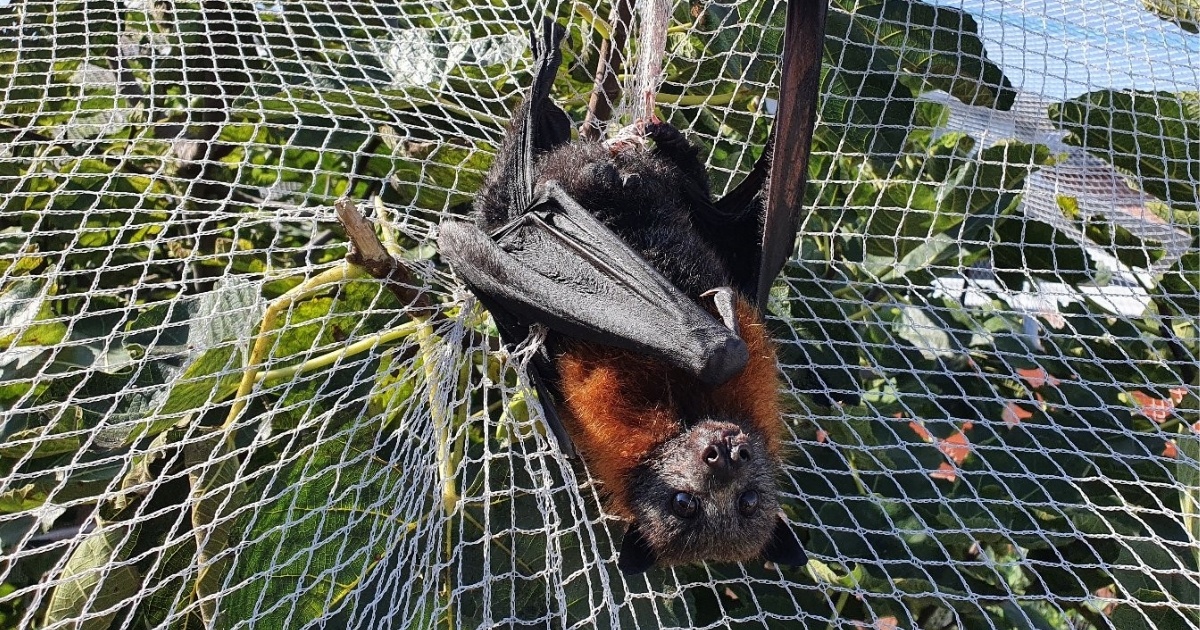Protecting Sydney’s Koalas: Why Corridor Advocacy Is Now Critical
December 2025
For emergency rescue support 24/7 please call 1300 094 737

Entanglement is one of the most common and preventable threats facing native wildlife in Australia. In the 2024 financial year alone, WIRES received 1,929 calls about animals caught in netting, string, fishing line and other human-made hazards. These situations can cause extreme distress, severe injuries and even death if not addressed promptly and properly.
Every case is different, and WIRES’ response depends on the type of animal, the entanglement, and the situation on the ground. Here’s how to recognise when to help, when to call, and how we can all reduce the risks for our wildlife.
Animals caught at height, such as birds hanging from trees, roofs, antennas or powerlines, require urgent attention — but should never be handled by the public.
In these cases:
Do not attempt a rescue yourself. It may be dangerous to you or cause further harm to the animal.
Call WIRES immediately on 1300 094 737.
If it is safe and you are able to stay on site, you may be asked to prepare a box or towel in case the animal comes down.
WIRES will coordinate a safe rescue, which may involve emergency services like Fire and Rescue NSW, SES, RSPCA, Ausgrid, or licensed climbers and arborists.
Example: A Noisy Miner hanging upside down from garden twine may be reachable. In rare cases, WIRES may guide you to gently support the bird with a towel and contain it in a box, but always leave untangling and medical care to professionals.
If a native animal, such as a bird or marsupial, is caught in netting or has string or fishing line tightly wound around a limb, but is otherwise reachable, it’s important to proceed with caution.
Do not try to untangle the animal yourself, especially if it is struggling or the material is tight.
If you can safely contain the animal without risk to yourself, place it gently in a ventilated box or pet carrier and take it to your nearest vet.
If the animal cannot be contained, call WIRES so we can arrange for a trained volunteer to attend.
Tightly wrapped material may be embedded into the skin. In these cases, sedation, pain relief, wound cleaning and antibiotics are often needed — all of which must be handled in sterile conditions by veterinary professionals.
We regularly receive calls about seagulls, pigeons and brush turkeys with fishing line or string wrapped around a foot or leg. Often these birds are still mobile, making them hard to contain.
If you can safely approach and contain the bird, do so gently and transport it to a vet.
If the bird flies off or evades capture, still report it to WIRES — our volunteers will try to locate and assist where possible.
In the case of marine animals, such as sea turtles entangled in fishing gear, do not attempt to cut them free. Call WIRES immediately. These rescues must be carried out by trained marine wildlife volunteers to ensure the safety of both the animal and the rescuer.
Many entanglements can be avoided with simple, mindful actions:
Dispose of fishing line and hooks responsibly. Cut line into short lengths and place it in a bin with a lid.
Use wildlife-friendly garden netting. Avoid thin or loose netting. A good test: if you can fit your little finger through the holes, the netting is not safe for wildlife.
Remove unused netting, string or twine from your yard or outdoor spaces.
Clean up litter, especially around waterways, parks and beaches.
Don’t attempt to remove entangled material from animals — leave that to vets and wildlife carers.
If you see a tangled or trapped animal, call WIRES on 1300 094 737 as soon as possible. Your call could be the first step in a life-saving rescue.
Stay in touch and get our regular rescue stories, WIRES updates and a free copy of our 15 Ways to Help Wildlife ebook
November 2025
November 2025
September 2025
August 2025
August 2025